Domestic means of early missile warning. 1-Part I
A few days ago on the "Military Review" in the "News»A publication appeared that referred to the transfer of several C-300PS air defense systems divisions to Kazakhstan. A number of visitors to the site took the liberty to assume that this is a Russian fee for using an early missile warning station on the shore of Lake Balkhash. In order to understand what the modern Russian early warning system is and how much Russia needs this object in independent Kazakhstan, let us return to the past.
In the second half of 60-x the main means of delivering nuclear weapons land-based ballistic missiles and deployed on submarines, and long-range bombers were relegated to the background. Unlike bombers, the nuclear warheads of ICBMs and SLBMs were practically invulnerable on the trajectory, and the flight time to the target, compared to bombers, was reduced many times. It was with the help of ICBMs that the Soviet Union managed to achieve nuclear parity with the United States. Prior to this, the Americans, who had invested heavily in the air defense system of North America (the USA and Canada), not without reason hoped to repel attacks against a few Soviet long-range bombers. However, after the mass deployment of ICBM positions in the USSR, the balance of power and the predicted scenarios of nuclear conflict changed dramatically. Under the new conditions, the United States could no longer sit overseas and hope that Europe and northeast Asia would become the main areas of use of nuclear weapons. This circumstance has led to a change in the approaches and views of the American military-political leadership on methods and means of ensuring security and the prospects for the development of strategic nuclear forces. By the beginning of the 70s, there was a reduction in the number of radar posts covering the air situation in North America, first of all, it affected the ships of the radar patrol. Numerous long-range air defense missile positions, useless against Soviet ICBMs, were almost completely eliminated in the United States. In turn, the Soviet Union was in a more difficult situation, the proximity of numerous American bases and tactical and strategic airfields aviation forced to spend huge amounts of money on air defense.
As ICBMs and SLBMs became the basis of nuclear arsenals, the creation of systems capable of detecting missile launches and calculating their trajectories in order to determine the degree of danger began. Otherwise, one of the parties received the possibility of a preemptive disarming strike. At the first stage, the over-the-horizon radar with a detection range of 2000-3000 km, which corresponded to the warning time 10 — 15 minutes before approaching the target, became means of warning about a missile attack. In this regard, the Americans placed their AN / FPS-49 stations in the UK, Turkey, Greenland and Alaska - as close as possible to the Soviet missile positions. However, the original task of these radars was to provide information about a missile attack for missile defense systems (ABM), and not to ensure the possibility of a retaliatory strike.
In the USSR, the design of such stations began in the middle of the 50-x. The Sary-Shagan proving ground has become the head object where research was conducted in the field of missile defense. It was here, in addition to the purely anti-missile systems, that the radar and computing facilities that were able to detect the launch and calculate with high accuracy the trajectories of enemy ballistic missiles at a distance of several thousand kilometers were tested. On the shores of Lake Balkhash, adjacent to the landfill, were subsequently built and tested the lead copies of the new radar missile attack warning system (EWS).
In 1961, with the help of the TsSO-P station (the Central Ground Detection Station), we were able to detect and track the real target. For transmission and reception of a signal, a DSO-P operating in the meter range had a horn antenna with a length of 250 m and a height of 15 m. . The experience gained in the creation of the TsSO-P was useful in the creation of the Danube radar with the detection range of objects up to 1 200 km, operating in the meter range.
Using the groundwork for the TsSO-P radar, a network of Dniester stations was created. Each radar used two “wings” of TsSO-P, in the center there was a two-story building, it housed a command center and a computer system. Each wing covered in azimuth the 30 ° sector, the scanning pattern in height was 20 °. The Dniester station was planned to be used for targeting anti-missile and anti-satellite systems. The construction of two radar sites, spaced apart in latitude. It was necessary for the formation of the radar field length 5000 km. One node (OS-1) was built near Irkutsk (Mischelevka), the other (OS-2) at Cape Gulshat, on the shores of Lake Balkhash in Kazakhstan. Four stations with chillers were built at each site. In 1967, the Dniester Radar Station took up combat duty and became part of the space monitoring system (SSS).
However, for the purpose of the EWS, these stations were not suitable, the military did not like the detection range, the low resolution and noise immunity. Therefore, a modified version of "Dniester-M" was created. The hardware of the Dniester and Dniester-M radars was similar (with the exception of installing antenna sectors at elevation angles), but their work programs differed significantly. This is due to the fact that detecting the launch of missiles required scanning at elevation in the range of 10 ° -30 °. In addition, at the Dniester-M station, the element base was partially transferred to semiconductors in order to improve reliability.
To test the key elements of "Dniester-M" at the site "Sary-Shagan" installation was built, which received the designation TsSO-PM. Tests have shown that, compared with the Dniester stations, the resolution has increased 10-15 times, the detection range has reached 2500 km. The first early warning radars, which are part of separate radio-technical units (ORTU), began to function at the beginning of 70-x. These were two stations of the type “Dniester-M” on the Kola Peninsula near Olenegorsk (node RO-1) and in Latvia in Skrunda (node RO-2). These stations were designed to detect approaching warheads from the North Pole and to monitor launches of the ASCP in the Norwegian and North Seas.
In addition to the construction of new ones, for use in the missile attack warning system (scanning by elevation 10 ° - 30 °), two existing stations were upgraded at the nodes OS-1 and OS-2. The other two Dniester stations were preserved unchanged to monitor space (scanning the elevation angle 10 ° - 90 °). At the same time as the construction of a new radar station of anti-ship missile systems in the Moscow region of Solnechnogorsk, the construction of a missile attack warning center began. The exchange of information between radio nodes and HZ PRN went on special lines of communication. By order of the Minister of Defense of the USSR from 15 February 1971, a separate division of anti-missile surveillance was put on alert, this day is considered the beginning of the USS of the USSR.
18 January 1972, the Resolution of the Central Committee of the CPSU and the Council of Ministers of the USSR approved the decision to create a unified missile attack warning system. It includes ground-based radar and space surveillance equipment. The Soviet missile defense warning system was supposed to promptly inform the military-political leadership of the missile attack by the United States and ensure a guaranteed counter-strike. To achieve the maximum warning time, it was intended to use special satellites and over-the-horizon radars capable of detecting ICBMs on the active leg of the flight. Detection of missile warheads in the later parts of the ballistic trajectory was envisaged with the help of the already created over-the-horizon radar. This duplication can significantly improve the reliability of the system and reduce the likelihood of errors, since different physical principles are used to detect the launching missiles and warheads: fixing the thermal radiation of the engine of the launching ICBM with satellite sensors and recording the reflected radio signal by radars. After the launch of the unified missile attack warning system, the Danube-3 (Kubinka) and Danube-3U (Chekhov) stations of the Moscow A-35 missile defense system were integrated into it.
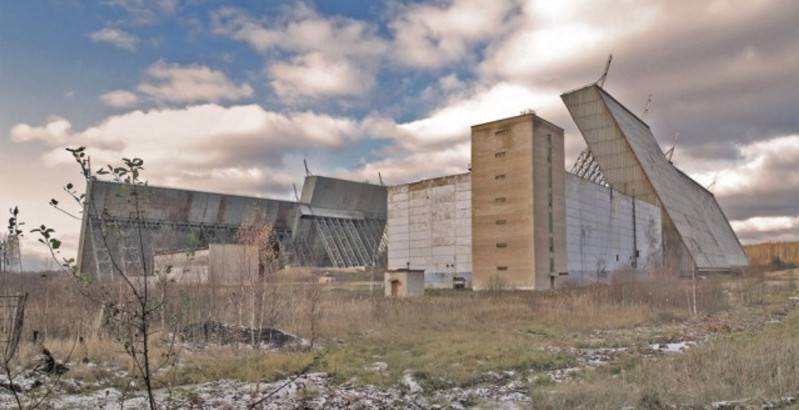
Radar "Danube-3" consisted of two antennas, spaced on the ground, receiving and transmitting equipment, a computer complex and auxiliary devices that ensure the operation of the station. The maximum target detection range reached 1200 km. Currently, the “Danube” family of radars are not functioning.
As a result of further improvement of the Dniester-M radar, a new station, Dnepr, was created. It doubles the viewing area of each antenna in azimuth (60 ° instead of 30 °). Despite the fact that the antenna horn was shortened from 20 to 14 meters, thanks to the introduction of a polarization filter, it was possible to improve the accuracy of measurements in elevation. The use of more powerful transmitters and their phasing in the antenna led to an increase in the detection range up to 4000 km. New computers allowed to process information twice as fast.
The Dnepr radar also consisted of two “wings” of a two-sector horn antenna with a length of 250 m and a height of 14 meters. It had two rows of slot antennas in two waveguides with a set of transmitting and receiving equipment. Each row generates a signal, scanning the 30 ° sector in azimuth (60 ° to the antenna) and 30 ° in elevation (from 5 ° to 35 ° in height) with frequency control. Thus, it was possible to provide 120 ° scanning in azimuth and 30 ° in elevation.
The first station "Dnepr" was put into operation in May 1974 of the year at the Sary-Shagan test site (OS-2 node). It was followed by the radar station near Sevastopol (RO-4 node) and Mukachevo (RO-5 node). Later, other radars were upgraded, with the exception of tracking stations for objects in space in Sary-Shagan and Mishelevka near Irkutsk.
In 1978, the Daugava installation with active phase-controlled antenna arrays was introduced into the site at Olenegorsk (RO-1), after which the station received the designation Dnepr-M. Thanks to the modernization, it was possible to increase the noise immunity, reduce the influence of the aurora in the ionosphere on the reliability of information, as well as increase the reliability of the node as a whole. Technical solutions applied in the Daugava, such as the receiving equipment and the computer system, were later used to create the next-generation Daryal radar.
Evaluating the Soviet radar first-generation missile systems, it can be noted that they are fully consistent with the tasks assigned to them. At the same time, to ensure the operation of the stations, a large number of highly qualified technicians were required. The hardware of the stations was largely based on electrovacuum devices, which, with very good gain and low noise levels, were very energy-intensive and changed their characteristics over time. Bulky transceiver antennas also required attention and regular maintenance. Despite all these shortcomings, the operation of some radars of this type continued until recently, and the Dnepr radar transmitter near Olenegorsk is still used in conjunction with the Daugava receiving part. The Dnepr station on the Kola Peninsula is planned to obscure in the near future the radar of the Voronezh family. As of 1 January, 2014 operated three Dnepr radar stations - Olenegorsk, Sary-Shagan and Michelevka.
The station "Dnepr" in the Irkutsk region (OS-1), apparently, no longer carries combat duty, as the modern Voronezh-M radar is built nearby, two antennas of which with the 240 ° survey sector allow you to control the territory from the US west coast to india. It is known that in 1993, on the basis of another Dnepr radar station in Michelevka, the Observatory of Radio Physical Atmospheric Diagnostics of the Institute of Solar-Terrestrial Physics of the Siberian Branch of the Russian Academy of Sciences was created.
The joint use of the Dnepr radar in Ukraine (near Sevastopol and Mukachevo) with 1992 was regulated by the Russian-Ukrainian agreement. The maintenance and operation of the stations was carried out by the Ukrainian personnel, and the information received was sent to the PRN Main Center (Solnechnogorsk). According to the intergovernmental agreement, Russia for this annually transferred to Ukraine up to 1,5 million dollars. In the 2005 year, after the Russian side refused to raise fees for the use of radar information, the stations were handed over to the State Space Agency of Ukraine (SSAU). It is worth saying that Russia had every reason to refuse to discuss the increase in the cost of payment. Information from the Ukrainian stations did not come out regularly, and besides, President Viktor Yushchenko officially allowed American representatives to the station, which Russia could not prevent. In this regard, our country had to urgently deploy on its territory new radar "Voronezh-DM" near Armavir and in the Kaliningrad region.
At the beginning of 2009, the Dnepr radar stations in Sevastopol and Mukachevo stopped transmitting information to Russia. The independent Ukraine radar of the early warning system proved to be unnecessary, the management of “Square” decided to dismantle both stations and disband the military units engaged in their protection and maintenance. At the moment, the station in Mukachevo is in the process of disassembly. In connection with the well-known events, they did not have time to start dismantling the capital structures of the Dnepr radar station in Sevastopol, but the station itself was partially plundered and inoperable. In the Russian media, information was voiced that the station Dnipro in the Crimea was planned to be operational, but this seemed an extremely unlikely event. The developer of the stations of the A.L. Mintsa (RTI), who was also engaged in upgrading and technical support throughout the entire life cycle, said that these over-the-horizon radar anti-ship missiles over more than 40 years of service were hopelessly outdated and fully exhausted. Investing in their repair and modernization is an absolutely unpromising occupation, and building a new modern station with better performance and lower operating costs will be much more rational.
It is unclear whether the Dnepr radar is still used in Kazakhstan (OS-2). According to the News of Cosmonautics magazine, this station was redeployed from tracking space objects to detecting real launches of foreign ballistic missiles. Since 2001, the radio engineering center Sary-Shagan was on combat duty as part of the Space Forces and provided control over the missile-prone areas from Pakistan, the western and central parts of the PRC, covering India and part of the Indian Ocean. However, despite repeated upgrades, this radar, created half a century ago, is worn out, outdated and is very expensive to operate. Even if it is still workable, then its withdrawal from combat duty is a matter of the near future.
At the beginning of 70-x, in connection with the emergence of new types of threats, such as separable head units of ICBMs and active and passive means of jamming radar anti-missile systems, the creation of new types of radars began. As already mentioned, some technical solutions implemented in the next generation stations were used in the Daugava installation - the reduced receiving part of the Daryal radar. It was planned that eight stations of the second generation, located on the perimeter of the USSR, will replace the Dnepr radar.
The first station was planned to be built in the Far North - on the Alexandra Land Island of the archipelago Franz Josef Land. This was due to the desire to achieve the maximum warning time in the main missile hazard direction. Perhaps the example in this case was the American radar station in Greenland. Due to the extreme climatic conditions when creating a new radar, strict construction standards were laid down: for example, the top of the receiving structure with a height of 100 meters with a hurricane 50 wind of m / s should not be deflected by more than 10. The power of life-support systems and energy would be enough for a city with a population of thousands of people 900. The station was planned to equip its own nuclear power plant. However, due to the excessive cost and complexity of the radar "Daryal" decided to build in the Pechora region. At the same time, construction began on the Pechora SDPP, which was supposed to provide the facility with electricity. Construction of the station went with great difficulty: for example, 100 July 27, on an almost finished radar during the tuning work at the transmitting center, a fire occurred. Almost 1979% of the radio transparent coating burned out, about 80% of the transmitters were burned or covered with soot.
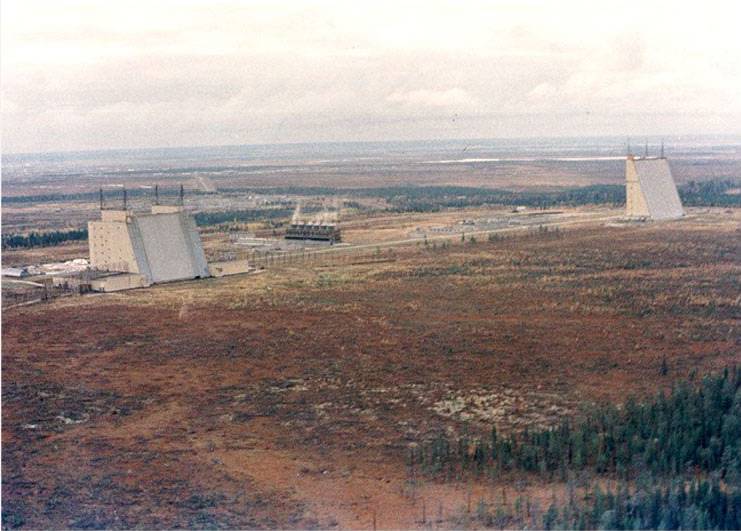
Daryal radar antennas (transmitting and receiving) are separated by 1,5 km. The transmitting antenna is an active phased array of 40 × 40 meters in size, filled with 1260 interchangeable modules with an output pulse power of each 300 kW. The receiving antenna of size 100 × 100 meters is an active phased array (HEADLAMP) with X-NUMX cross-vibrators placed in it. Radar "Daryal" works in the meter range. It is capable of detecting and simultaneously tracking about 4000 targets with an EPR of the order of 100 m² at a distance of up to 0,1 km. The viewing area is 6000 ° in azimuth and 90 ° in elevation. With very high performance, the construction of stations of this type turned out to be extremely costly.

The first station under Pechora (node RO-30) was put into service on January 20 1984 of the year, and March 20 of the same year was put on combat duty. It has the ability to control the space up to the northern coast of Alaska and Canada, and it completely views the space above Greenland. Following the station in the north of 1985, the second radar station, the so-called Gabala radar station (PO-7 hub) in Azerbaijan, followed.
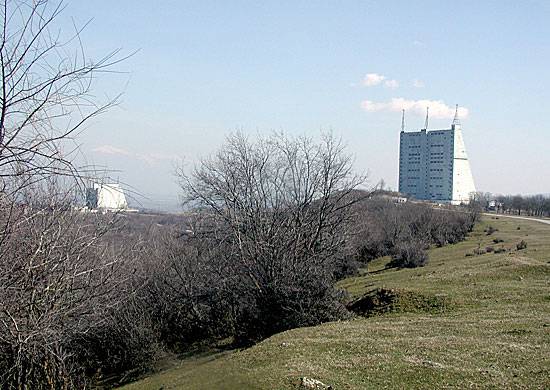
In general, the fate of the project was unsuccessful: only two out of eight planned stations were put into operation. In 1978, in the Krasnoyarsk Territory, near the village of Abalakovo, the construction of a third Daryal-type station began. In the years of “perestroika”, nine years after the start of work, when hundreds of millions of rubles were spent, our leadership decided to make the Americans a “goodwill gesture” and preserved construction. And already in 1989, it was decided to demolish the almost completely built station.
Construction of the radar station early warning system in the area of the village Mishelyovka in the Irkutsk region continued on 1991 year. But after the collapse of the Soviet Union, it was terminated. For a while this station was the subject of bargaining with the United States, the Americans offered to finance its completion in exchange for withdrawing from the ABM treaty. In June, the 2011 of the year, the radar was demolished, and a new Voronezh-M type radar was built on the site of the transmitting position in 2012.
In 1984, the ORTU Balkhash (Kazakhstan) began the construction of a radar station according to the improved project Daryal-U. By 1991, the station was able to bring to the stage of production tests. But in 1992, all work was frozen due to lack of funding. In 1994, the station was mothballed, and in January, 2003, it was transferred to independent Kazakhstan. 17 September 2004 of the year as a result of a deliberate arson of the receiving position a fire occurred that destroyed all the equipment. In 2010, the building collapsed during unauthorized dismantling, and in 2011, the buildings of the transmitting position were dismantled.
No less deplorable was the fate of other stations of this type. The construction of the “Daryal-U” radar at Cape Chersonese, near Sevastopol, which began in the 1988 year, was discontinued in the 1993 year. The Daryal-UM radar in Ukraine in Mukachevo and in Latvia in Skrunda, which were in high readiness, were blown up under US pressure. The Gabala radar station, due to technical problems and high energy consumption in the last years of its existence, functioned with periodic short-term switching on in the “combat operation” mode. After Azerbaijan tried to raise the rent, in 2013, Russia refused to use the station, and it was transferred to Azerbaijan. Part of the equipment was dismantled and exported to Russia. The station in Gabala was replaced by the Voronezh-DM radar near Armavir.
The only operating radar of the type "Daryal" remained station in the Komi Republic. After the closure of the radar station in Gabala, it was also planned to dismantle it, and on this site to build a new radar "Voronezh-VP". However, some time ago, the press service of the Ministry of Defense of the Russian Federation said that the station in 2016 should undergo a deep modernization.
In addition to the over-the-horizon radar, in the Soviet early warning radar, there were over-the-horizon radar stations (DPRS) of the “Duga” type, using the effect of two-jump over-the-horizon radar. In favorable conditions, these stations were able to observe high-altitude aerial targets, for example, to record the mass take-off of American strategic bombers, but mainly they were designed to detect plasma "cocoons" formed during the operation of engines of ICBMs in large quantities.
The first prototype ZGRLS "Duga" began to operate near Nikolayev at the beginning of the 70-x. The station demonstrated its performance by recording the start of the Soviet ballistic missiles from the Far East and the Pacific Ocean. After evaluating the results of trial operation, it was decided to build two more over-the-horizon radars of this type: in the vicinity of Chernobyl and Komsomolsk-on-Amur. These stations were intended to pre-detect the launch of ICBMs from the United States, before they could be seen by the Dnepr and Daryal radars. Their construction is estimated at more than 300 million rubles in prices of the beginning of 80-x.
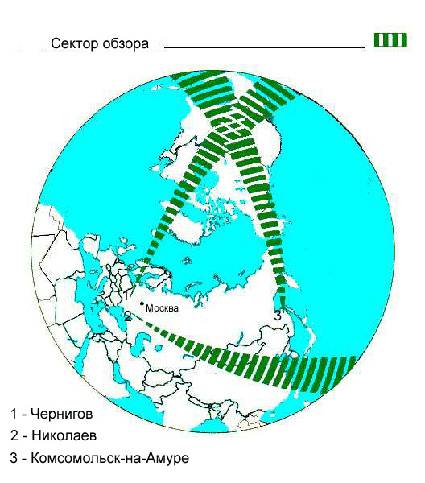
DGRA-1 near Chernobyl was put into operation in 1985 year. I must say that the location of this station was not chosen by chance, proximity to nuclear power plants ensured reliable power supply with very high energy consumption of this object. But later it caused a hasty decommissioning of the radar due to radiation contamination of the area.
The station, sometimes referred to as “Chernobyl-2”, was impressive in size. Since one antenna could not cover the working frequency band: 3,26-17,54 MHz, the whole range is divided into two sub-bands, and there were also two antenna arrays. The height of the masts of the high-frequency antenna from 135 to 150 meters. On Google earth snapshots, the length is approximately 460 meters. The high-frequency antenna has a height of up to 100 meters in height, its length in the Google Earth images is 230 meters. Radar antennas are built on the principle of a phased antenna array. The ZGRLS transmitter was located in 60 km from receiving antennas, near the village of Rassudovo (Chernihiv region).
After launching the station, it became clear that its transmitter began to block radio frequencies and frequencies intended for the operation of aviation control services. Subsequently, the radar was modified to pass these frequencies. Also, the frequency range has changed, after the upgrade - 5 — 28 MHz.
However, an upgraded radar prevented the Chernobyl accident from being put on combat duty. Initially, the station was mothballed, but later it became clear that with the existing level of radiation it would not be possible to return it to service, and it was decided to dismantle the main radio electronic components of the AGRS and remove them to the Far East. At present, the remaining facilities of the station have become a local landmark, with such dimensions receiving antennas can be seen from almost anywhere in the Chernobyl exclusion zone.
In the Far East, the receiving antenna and sounding station of the Krug ionosphere, which was intended as an auxiliary to the SGRLS, as well as to generate current information about the passage of radio waves, the state of their passage, the choice of the optimum frequency range, were placed in 35 km from Komsomolsk-on-Amur , near the village of Cartel. The transmitter was located in 30 km north of Komsomolsk-on-Amur, near the Lian-2 military town, in which the 1530 anti-aircraft missile regiment is stationed. However, in the Far East, the service ZGRF was also short. After the fire in November 1989 of the year that occurred in the receiving center, the station was not restored, the dismantling of the receiving antenna facilities began in 1998.
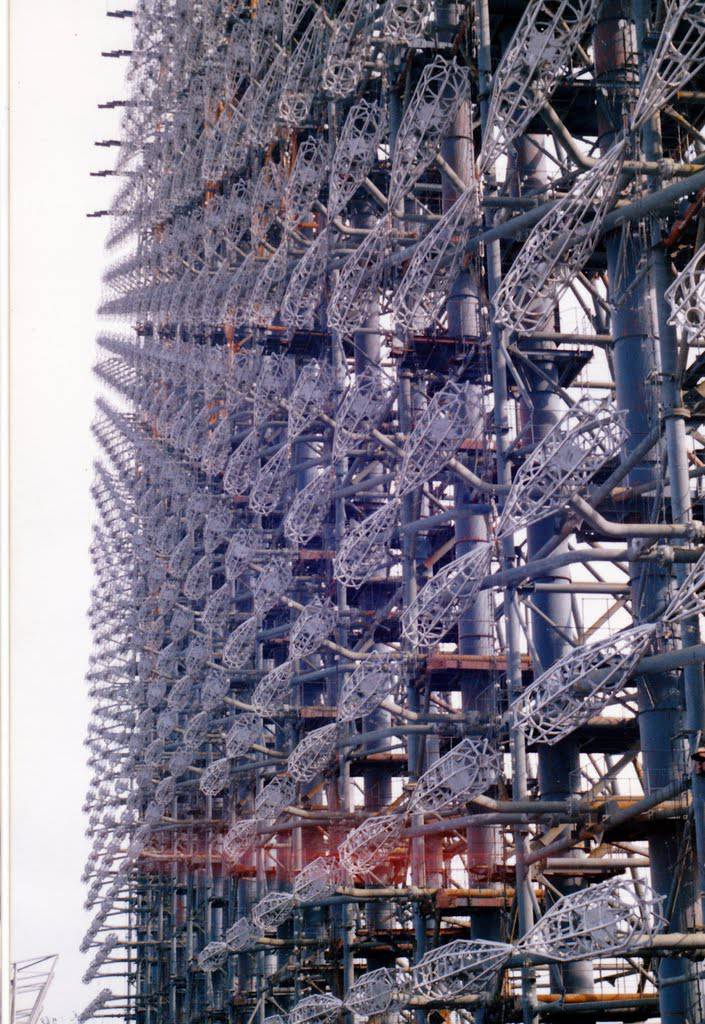
The author happened to be present at this event. The dismantling was accompanied by a total plundering of the entire receiving center, even the communications equipment that was still suitable for further use, the elements of the power and cable facilities were mercilessly destroyed by the metalworkers. Among the locals, spherical vibrator elements, which were used as a metal frame for building greenhouses, were very popular. Earlier, the Krug sounding station of the ionosphere underwent complete destruction. At the present time, remains of concrete structures and underground structures filled with water have remained on this site. On the territory where the Duga SGRLS receiving antenna was once located, the C-300PS air defense missile division, covering the city of Komsomolsk-on-Amur from the south-west, is currently located.
To be continued ...
Based on:
http://www.ww2.dk/new/pvo/radar/49ortu.htm
http://politrussia.com/vooruzhennye-sily/kak-rossiya-laquo-nezametno-raquo-426/
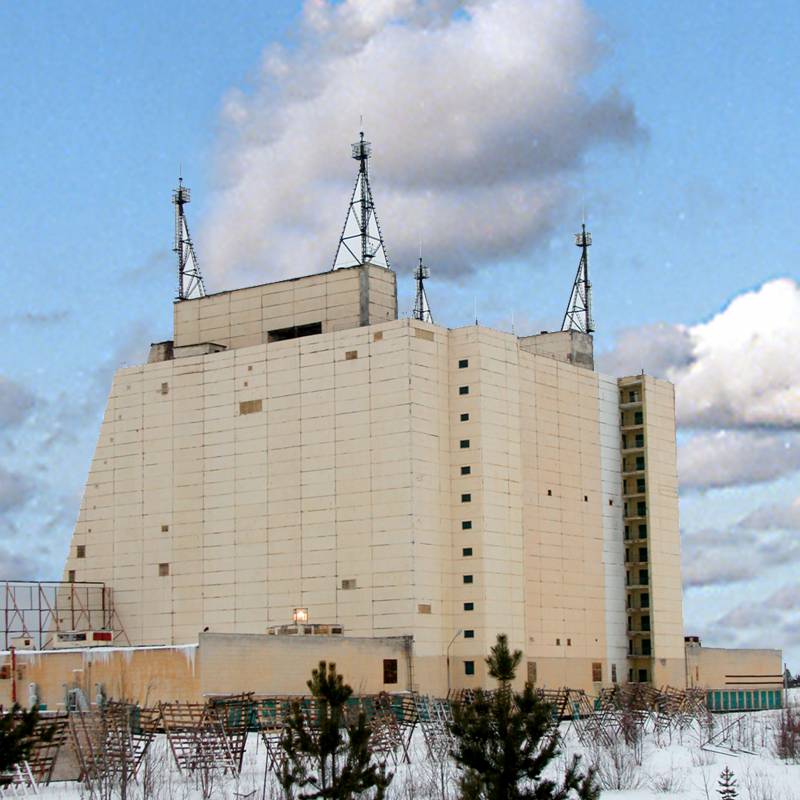
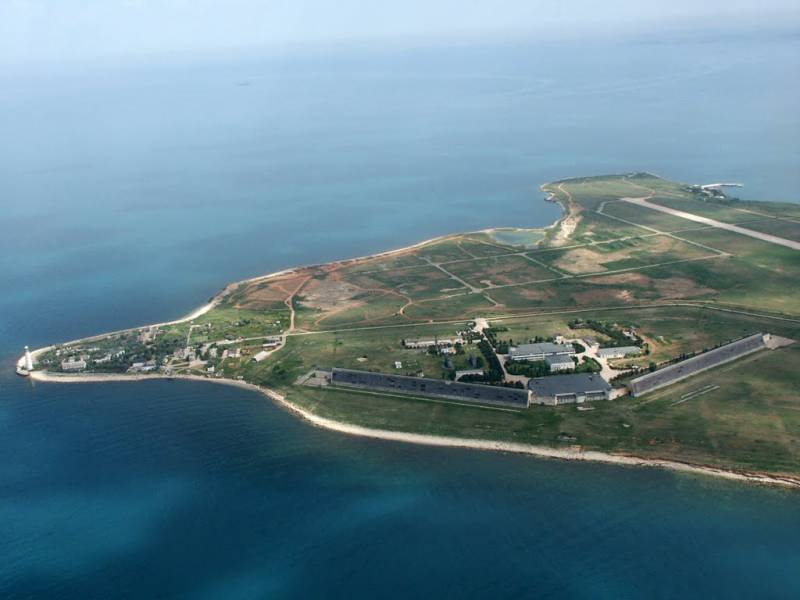
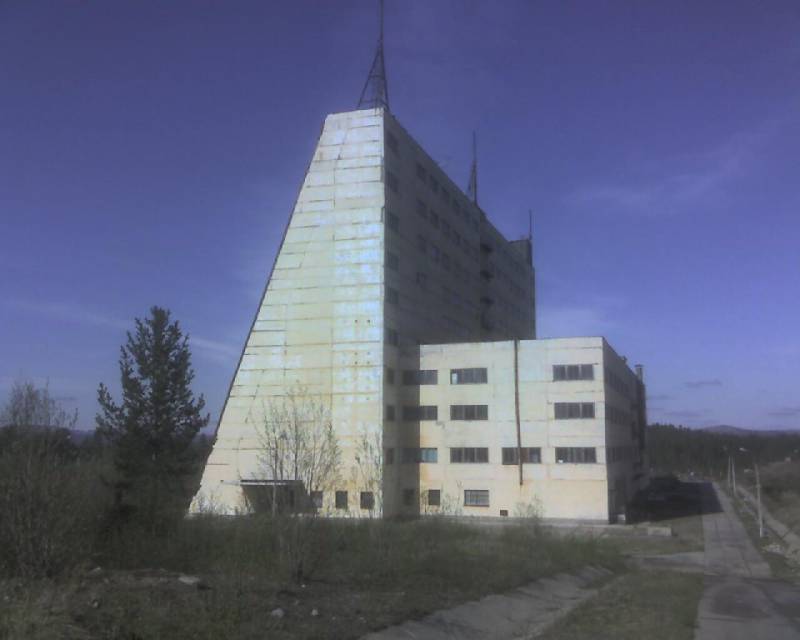
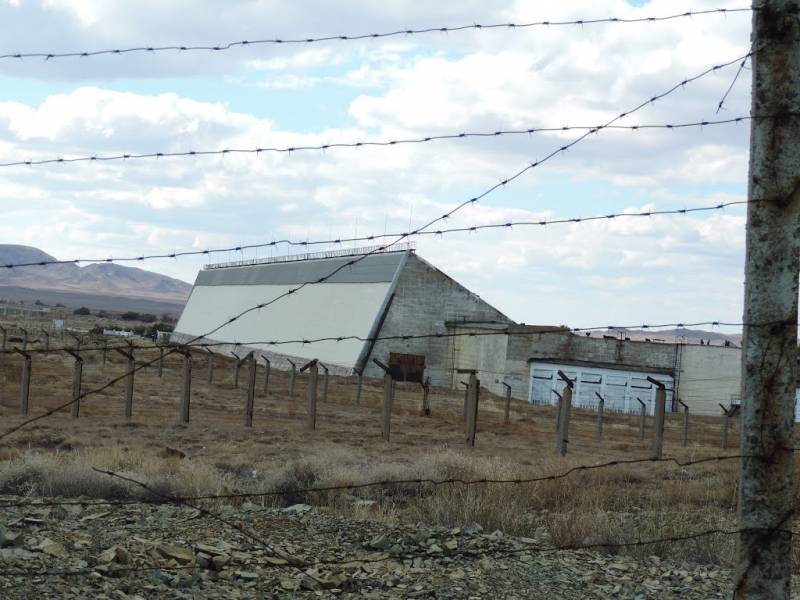
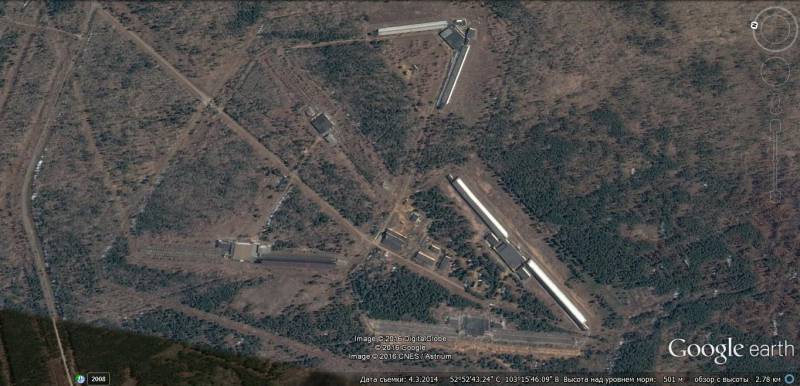
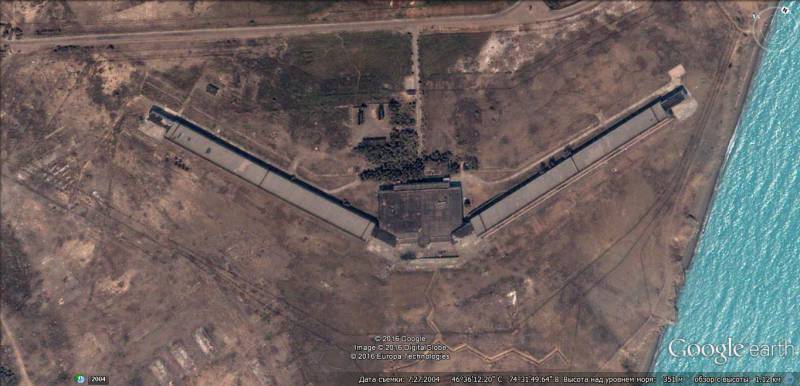
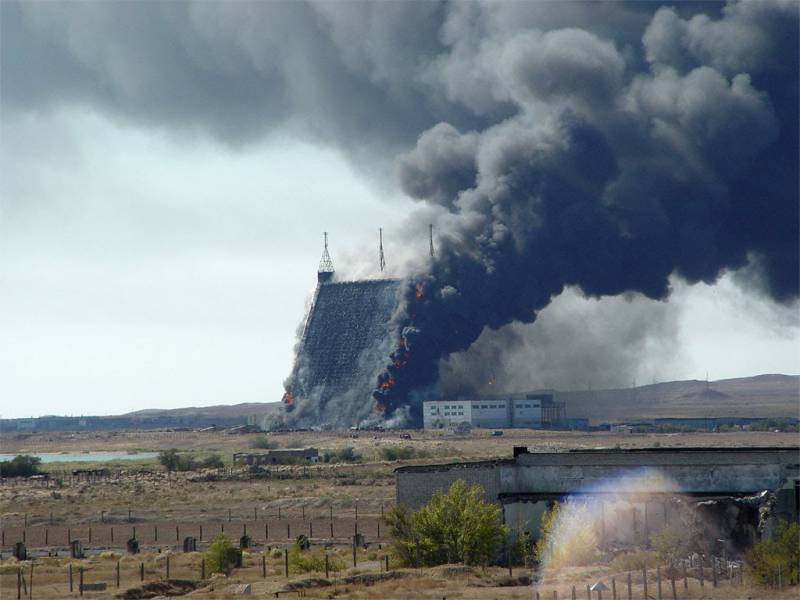
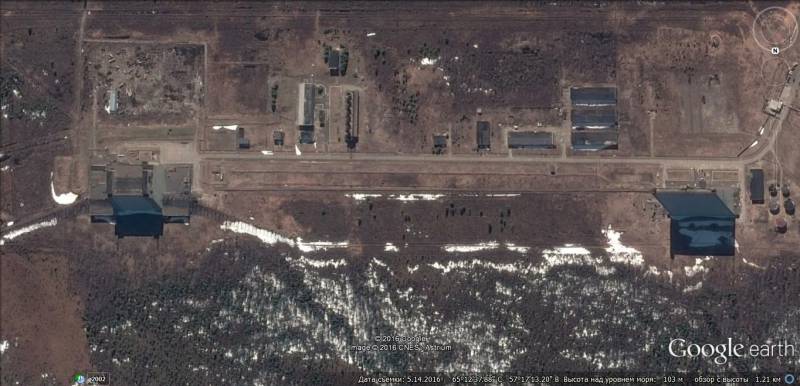

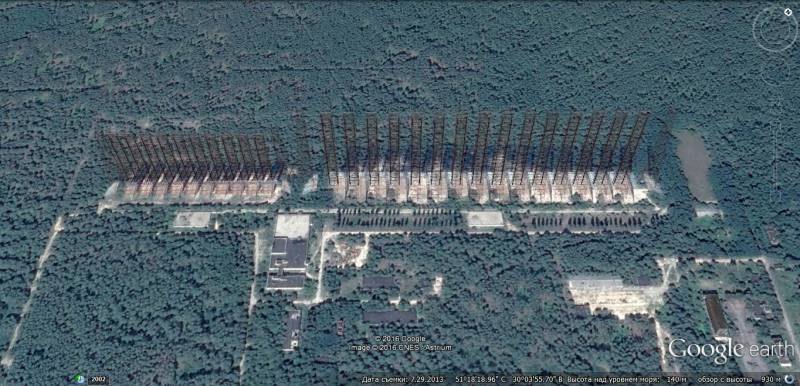
Information